
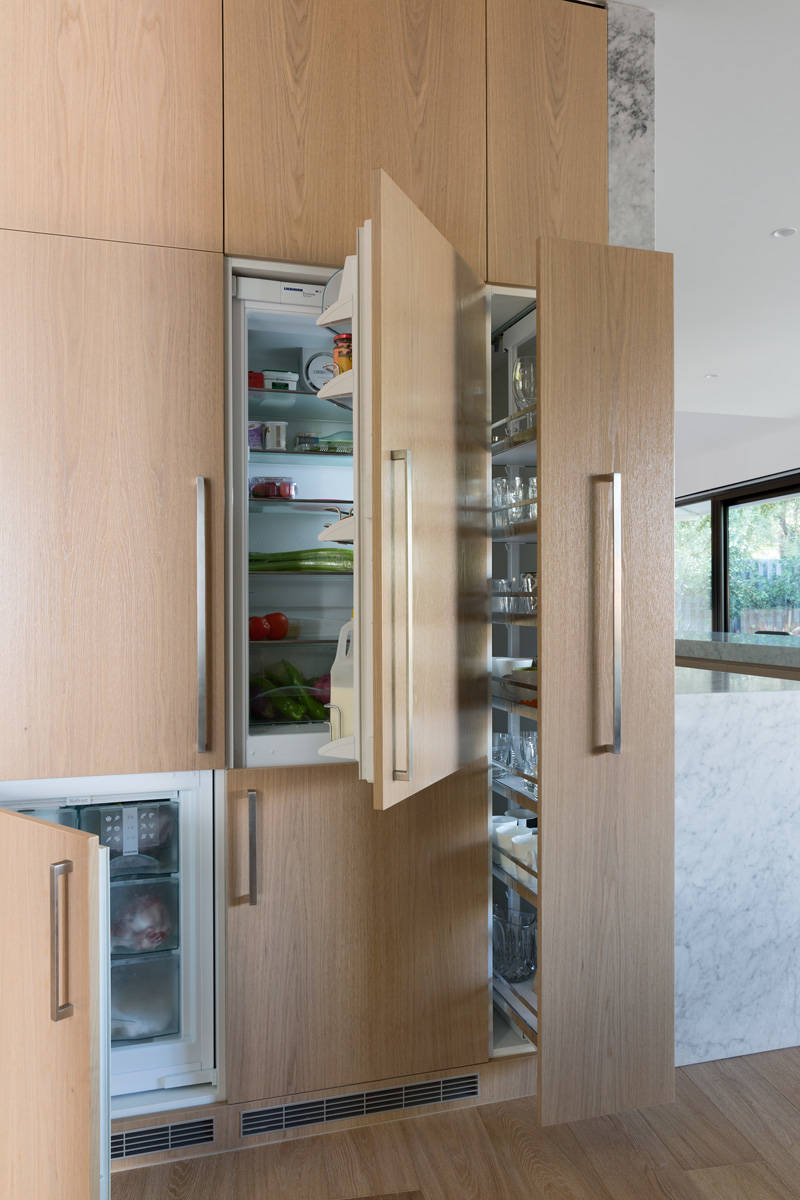
The refrigerator center serves as a receiving and initial food-preparation point in the kitchen layout. It is best positioned near the entrance from the direction of grocery arrival. Even if this arrangement is not the case in your kitchen, considering this function can help you determine how to begin organizing your kitchen storage space.
A countertop next to or across from your refrigerator is the ideal spot for setting down grocery bags. This position allows immediate transfer of cold items to the fridge and freezer, and storage of staples, canned goods, condiments, cereal boxes and other dry food items in nearby cabinets or a nearby pantry.
Easy access to your staples for initial food preparation helps make the job go faster and easier. Since your staples are placed here, plan to have this same area hold mixers and mixing bowls and their preparation utensils, such as measuring spoons and cups along with sifters, graters, salad molds, cake tins, pie plates and muffin tins.
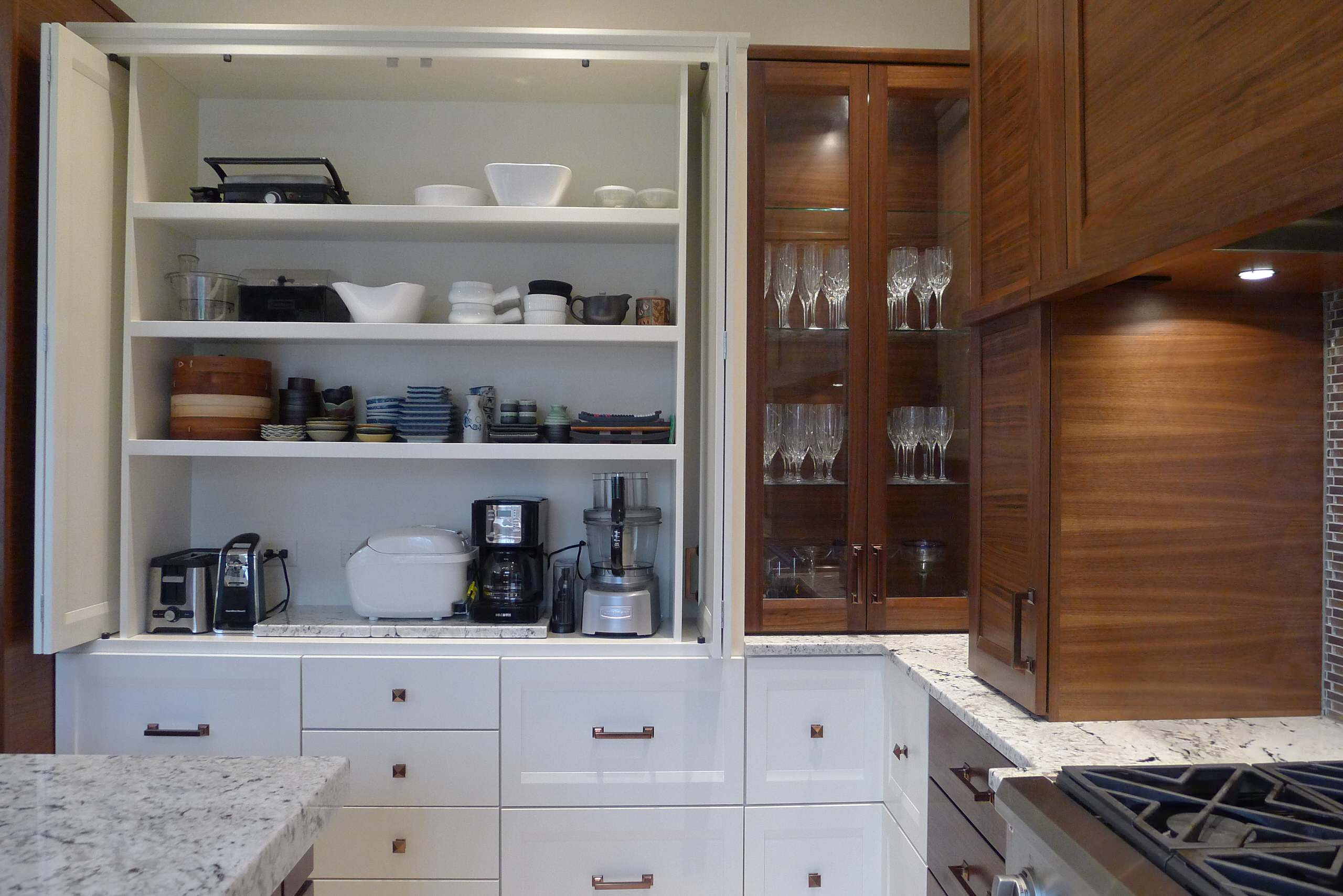
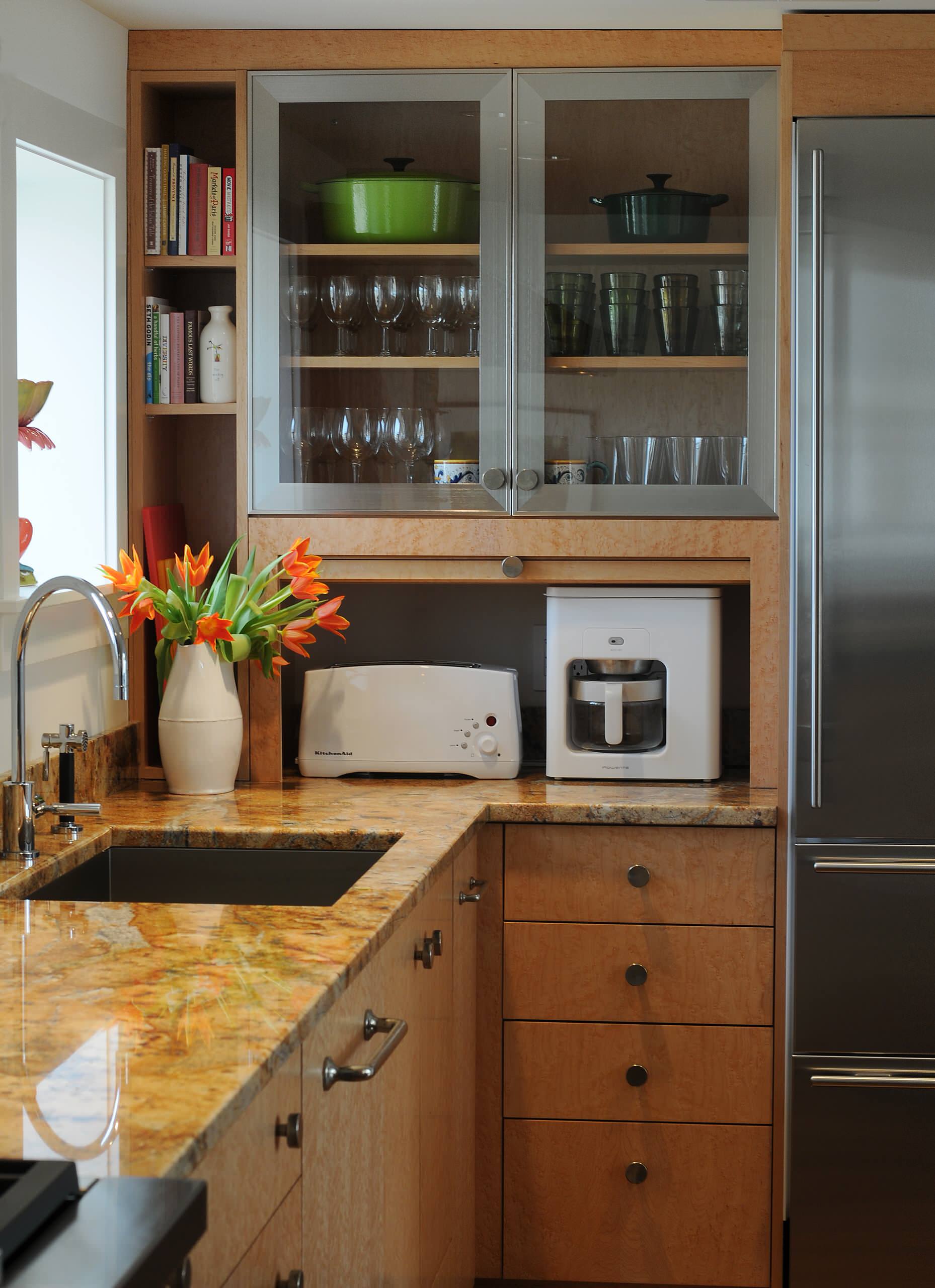
Consider storing brooms, dustpans and mops in a pantry or small closet near your refrigerator center.

How much storage do you need for pantry items? Allow at least 16 cubic feet for storing dry groceries. Pantry pullout cabinets begin at about 24 cubic feet, while dedicated closet pantries begin at about 72 cubic feet (a space that’s 3 feet square by 8 feet tall).
What’s the right amount of storage for cooking equipment and tools? Start with wall and base cabinets of at least 24 inches in width. Bigger families and collectors need to begin with at least 42 inches in width.
What about refrigerated food storage? The smallest fridge starts at about 10 cubic feet of food storage space. Top-of-the-line units start at about 25 cubic feet of refrigerated food storage space.
How much storage room do you need for small appliances, vases, bowls and trays? Minimalists begin with 12 inches in width of wall and base cabinets, while big families may want to start with 36 inches.

The sink center should be between the refrigerator and the range center, or cooking area, for maximum efficiency. Since sinks get the most use and traffic of any spot in the kitchen, centrally located sinks and dishwashers work best.
Plan to have the most uncluttered countertop space in the sink center. The area in and around sinks is used for food-preparation tasks involving cleaning and cutting, as well as washing and cleaning up after meals. Place trash and recycling containers strategically so that tidy disposal happens effortlessly.
Storage at sink centers includes places for everyday flatware, dishes and glassware, as well as activities involving waste management, dishtowel placement and storage, cleaning supplies, polishing and drying.

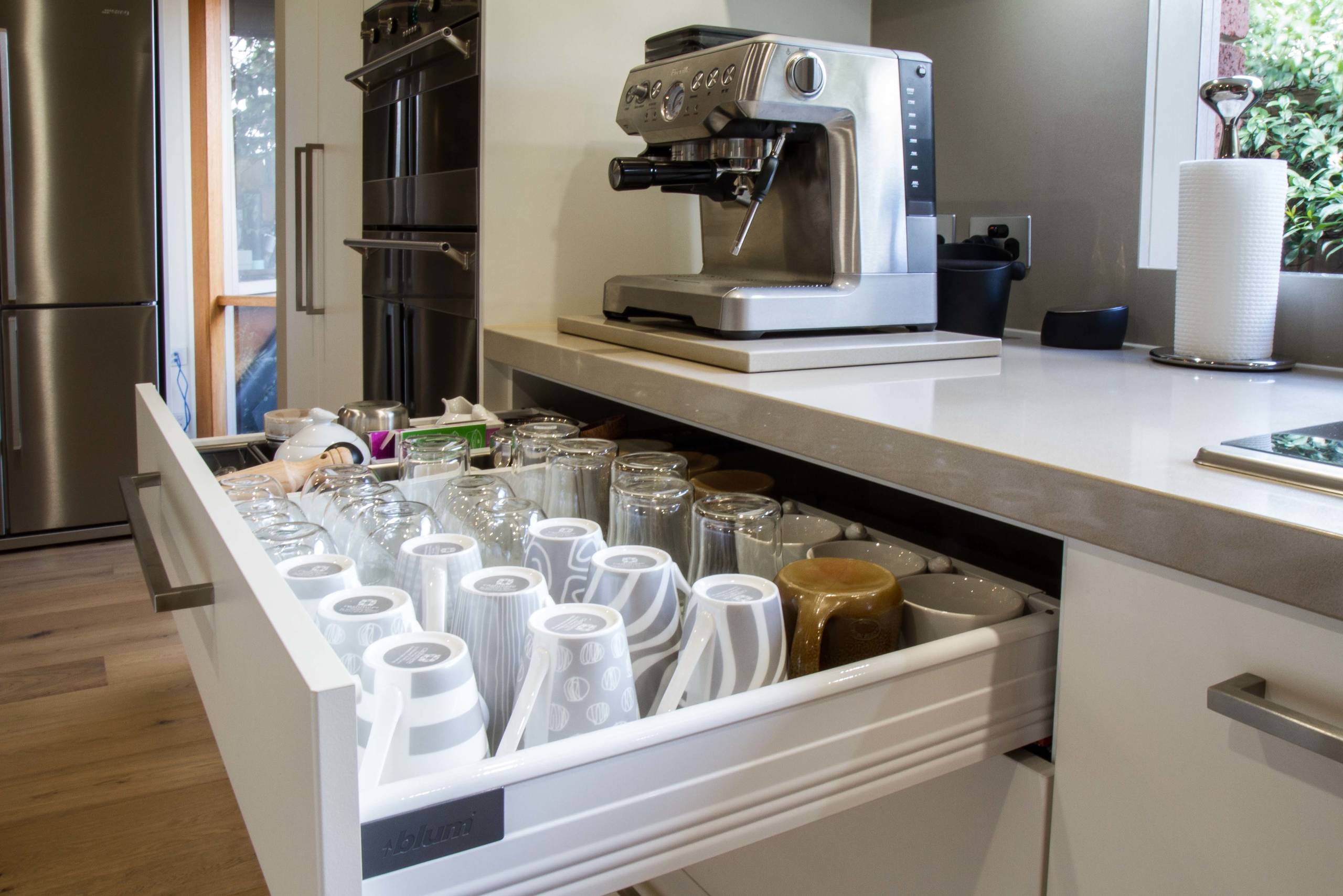

Dishes, glasses and flatware. The smallest kitchen needs at least 18 inches in width of wall and base cabinets, while gourmet cooks and large families should begin with 42 inches in width of upper and lower cabinets.
Cutlery, cutting boards and small appliances. Minimalists begin with 12 inches in width of wall and base cabinets, while big families should begin with 42 inches.
Trash and recycling. Depending on how you recycle, compost and dispose, begin with 12 inches in width of base cabinets and go up to 36 inches in width for a big household.
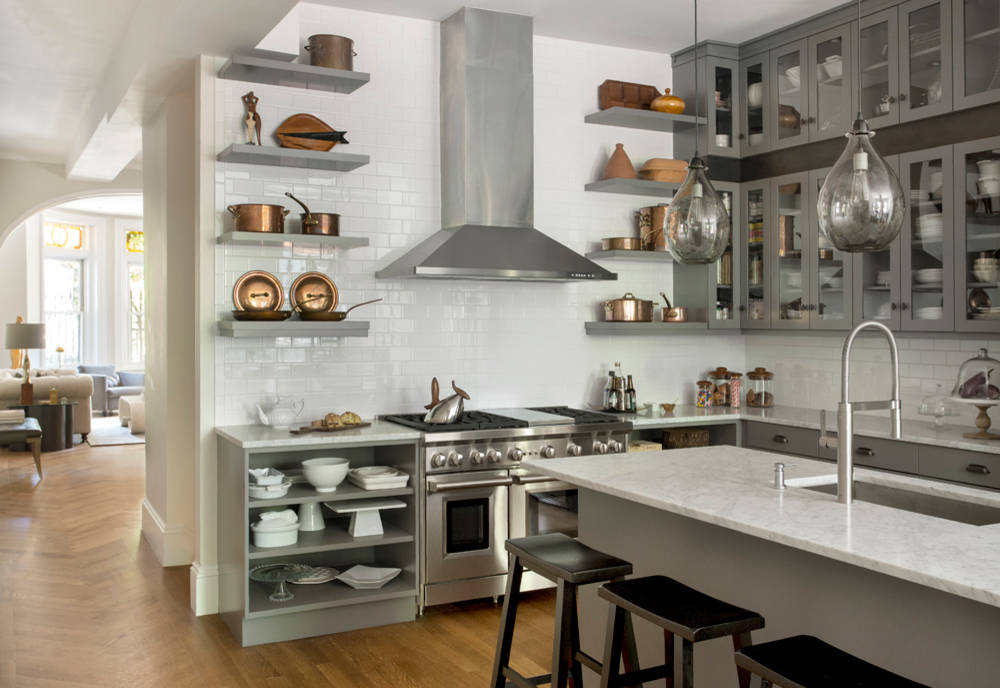
Two configurations, a range or a cooktop with wall ovens, comprise the range center, where cooking food and preparation for serving takes place. Place these functions toward or near the dining room. Anything that involves the cooking process needs to be within the range center. Ovens with ample countertop space next to or closely across from them provide a spot to set down hot items quickly. In immediate and obvious proximity to the range center, put potholders and other items that aid in handling hot cookware. Also use this location to transfer cooked food to serving dishes. Plan to store platters, bowls and other equipment used to get food to the table around the range center.
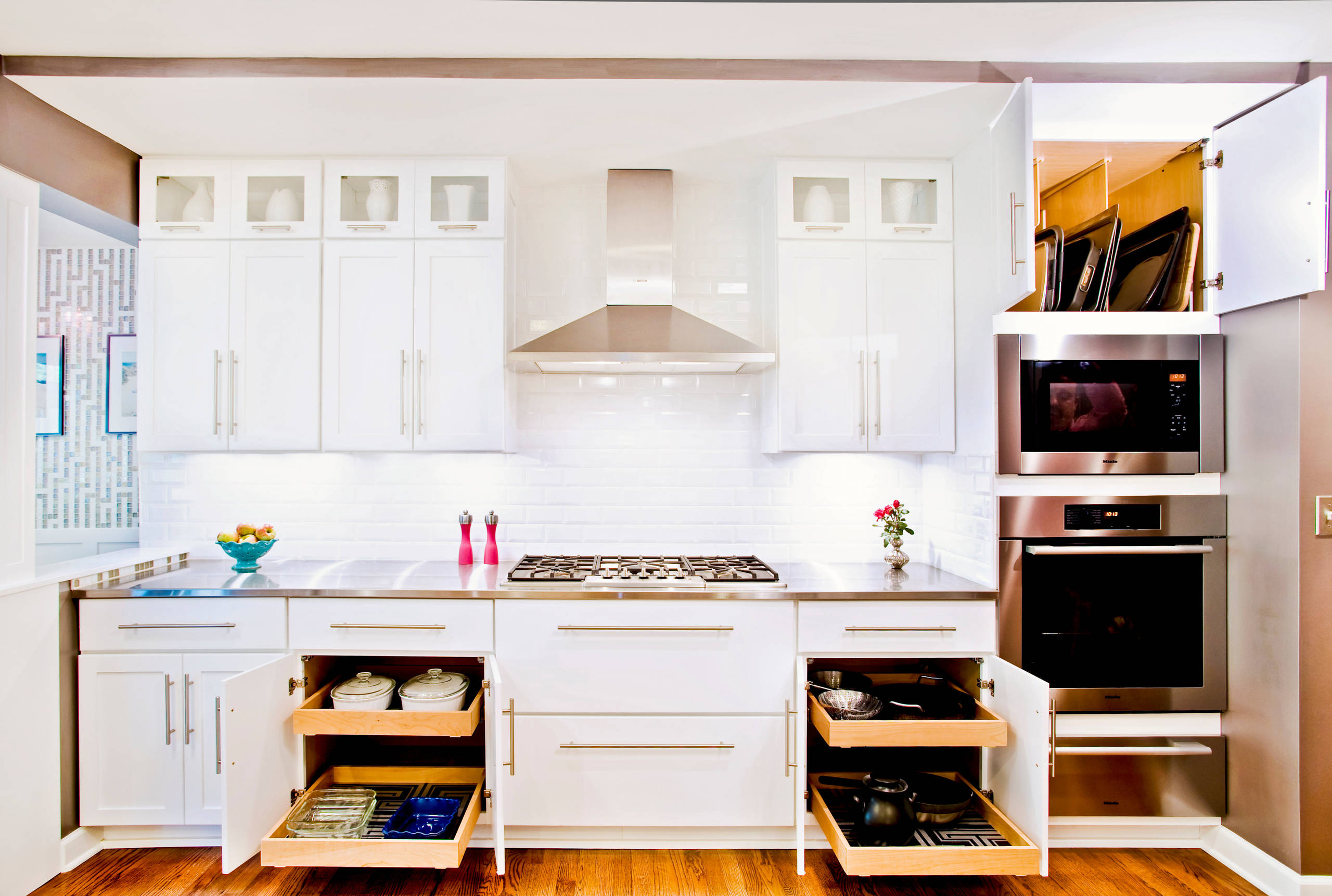
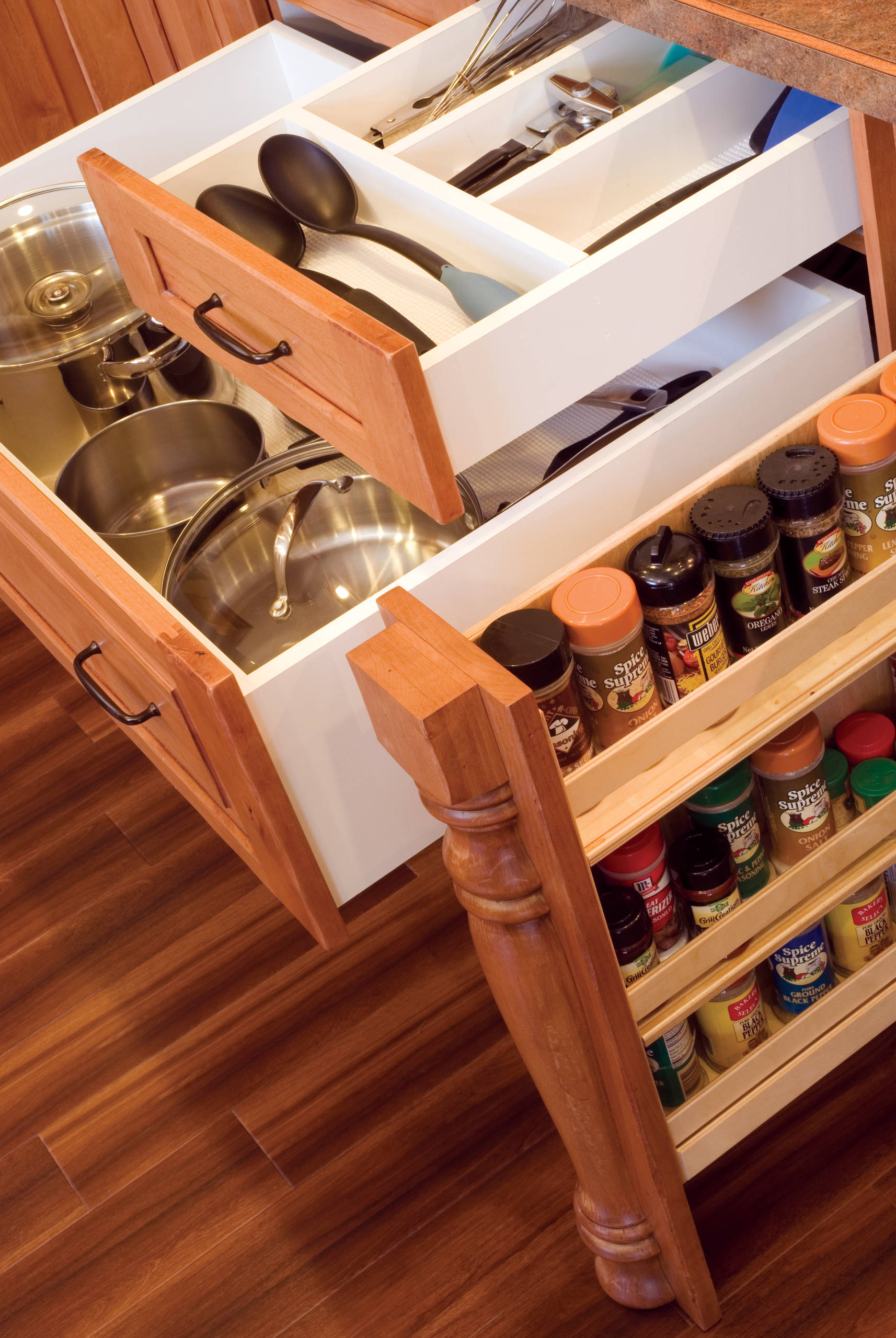

Microwaves. These ovens can be found in 24-inch widths for minimalists, while some units are built into double-oven arrangements that need 30 inches in width.
Cookware, bakeware and small appliances. Small abodes need at least 24 inches in width of wall and base cabinets, while big families begin with at least 60 inches in width.
Serving pieces, tableware and table linens. Minimalists need at least a 12-inch width in base cabinets, while a big household needs at least 36 inches in width.
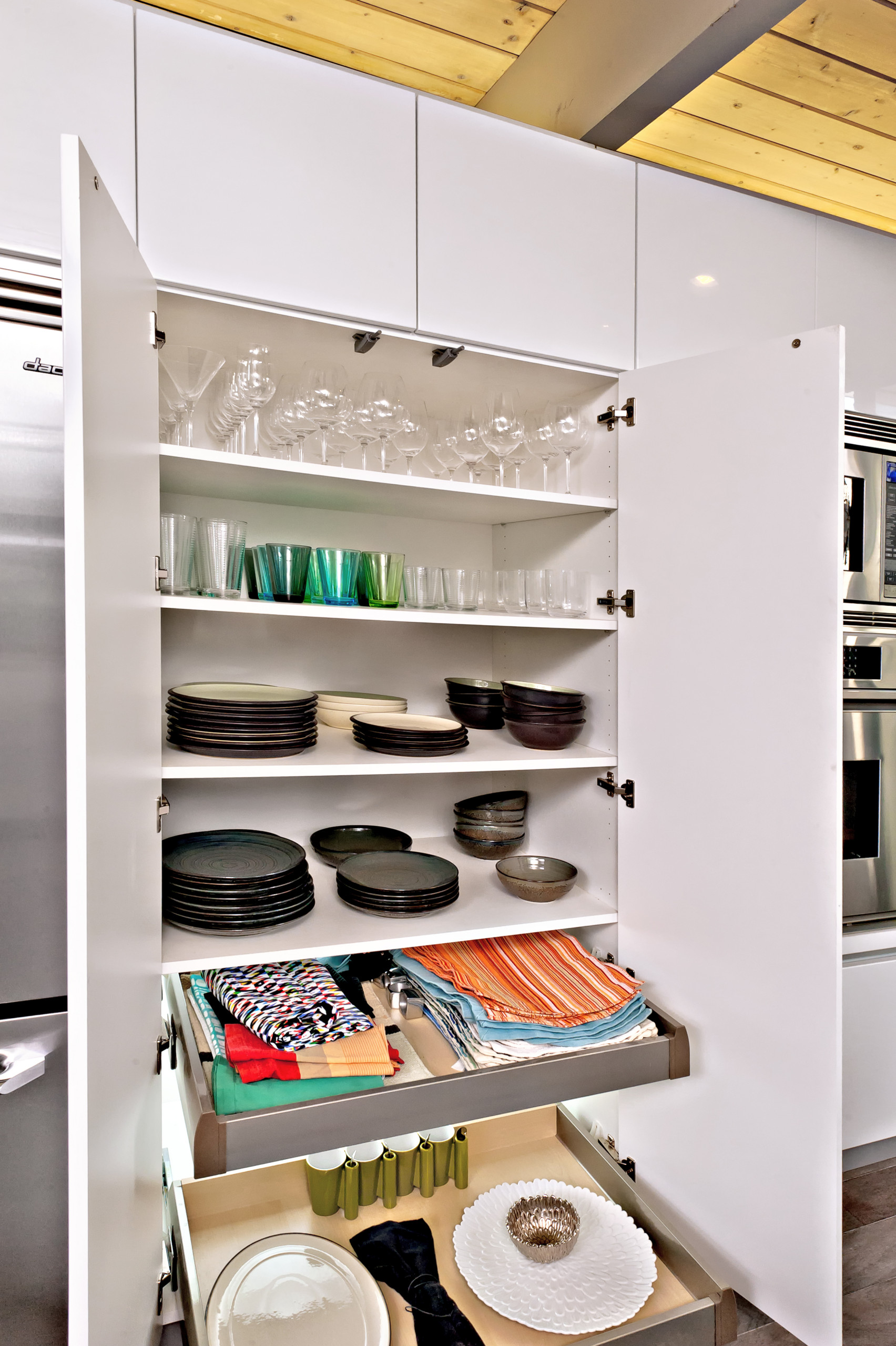
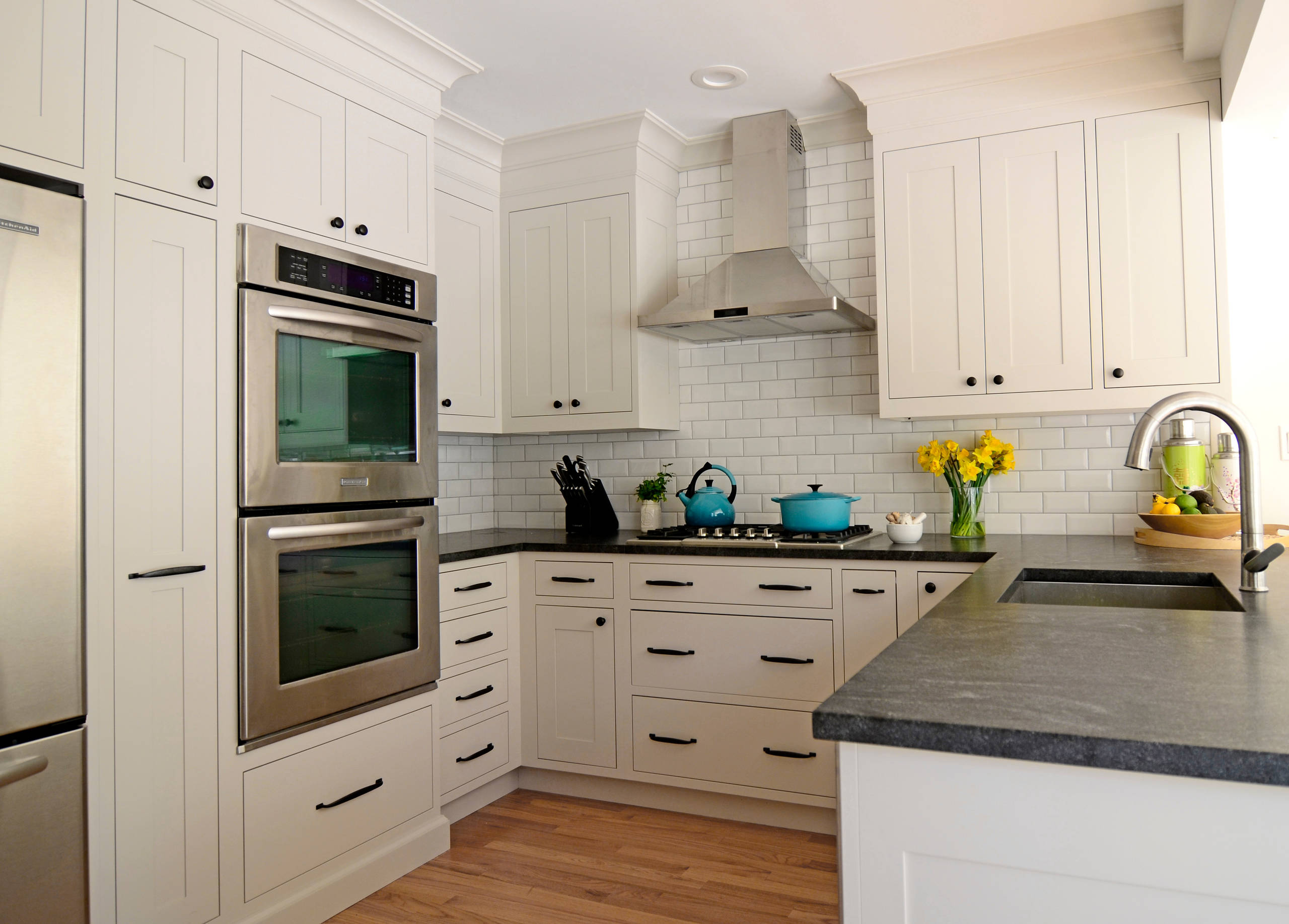
The number of people and cooks in your household will drive many of your kitchen storage choices. Consider four common scenarios:
- The Minimalist: Those with efficient and concise lifestyles, such as urban dwellers and singles
- The Starter Home: Those just beginning homemaking and still adding to housewares
- The Empty Nester: Those who downsize but still have plenty of things they want to keep
- The Big Family: Those with a houseful of children of all ages, lots of stuff to stow or a resident gourmet cook
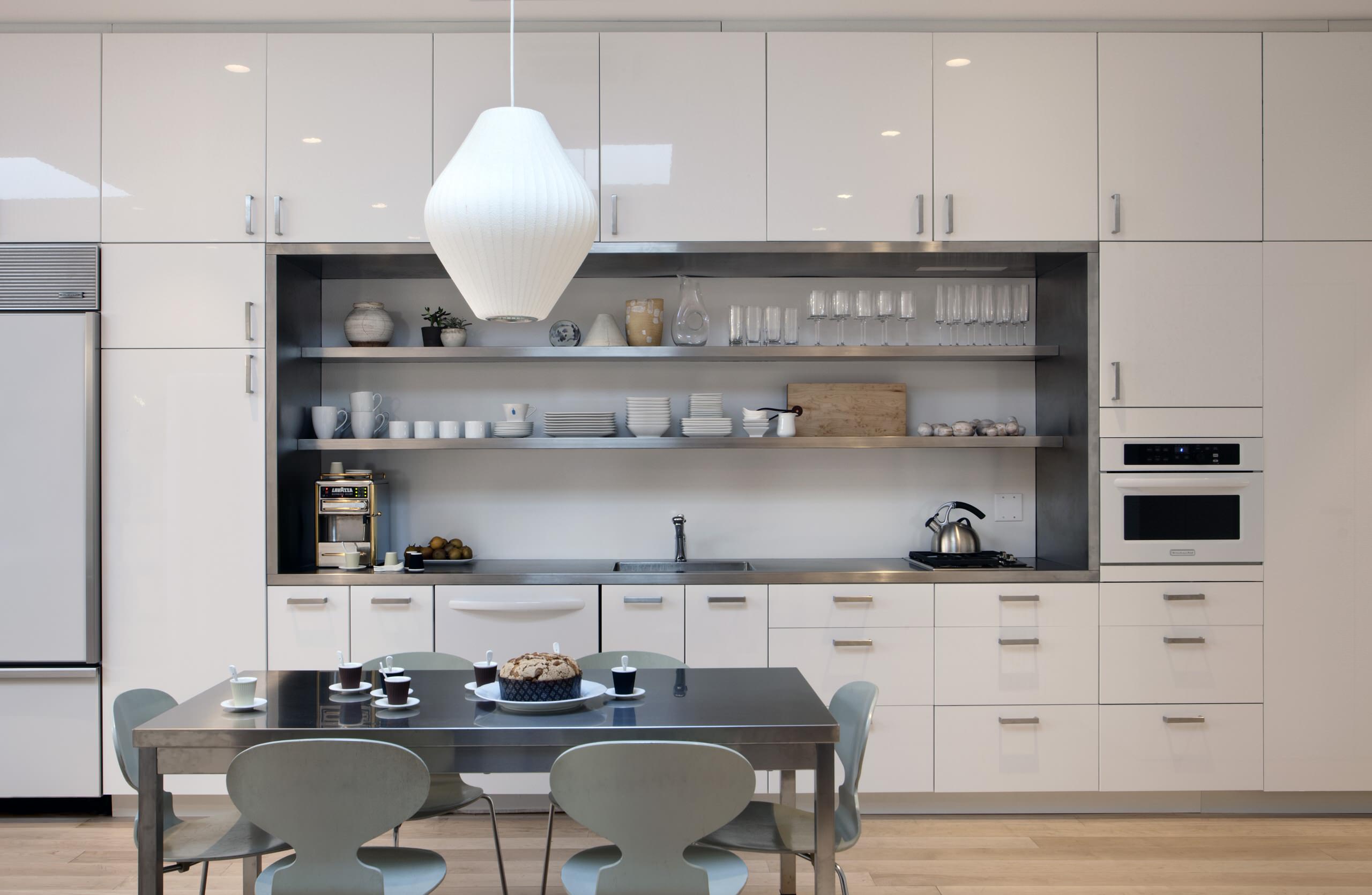 The Minimalist Kitchen
The Minimalist Kitchen
From left to right, the refrigerator begins this one-wall kitchen, followed by a pantry cabinet. Next, a dishwasher and small sink provide an efficient cleanup space, with open shelving for everyday dinner and glassware artistically displayed. A small cooktop and wall oven frame the right-hand end of the scheme. High ceilings allow an extra bank of cabinets above average reach, which can be accessed when necessary with a stepladder.
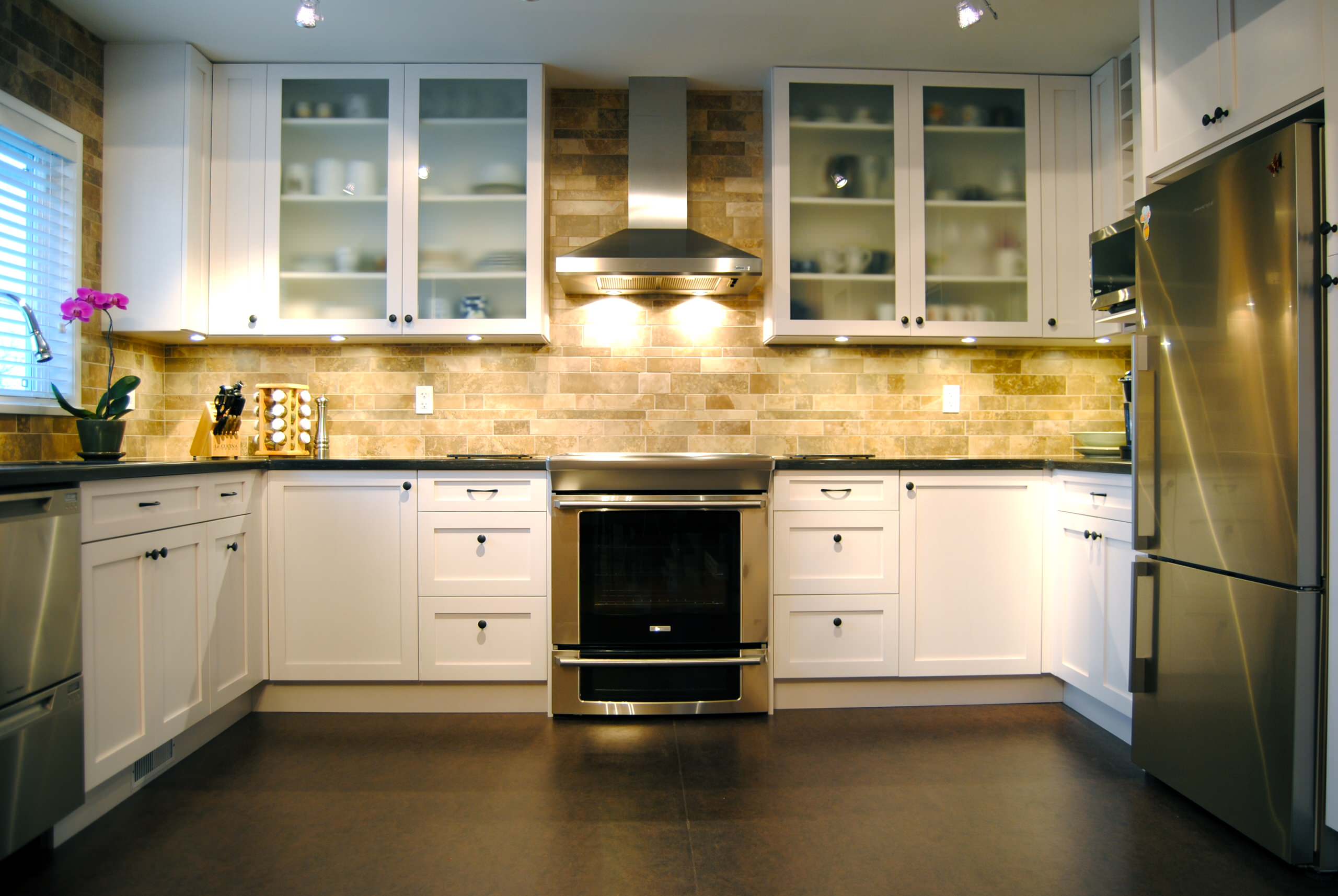
Efficient but thorough should be your thoughts when putting together a starter kitchen. This example has a simple 30-inch-wide range and a built-in microwave oven strategically placed next to the fridge. The U-shape provides an efficient work triangle but allows enough space for a couple of cooks to work together.
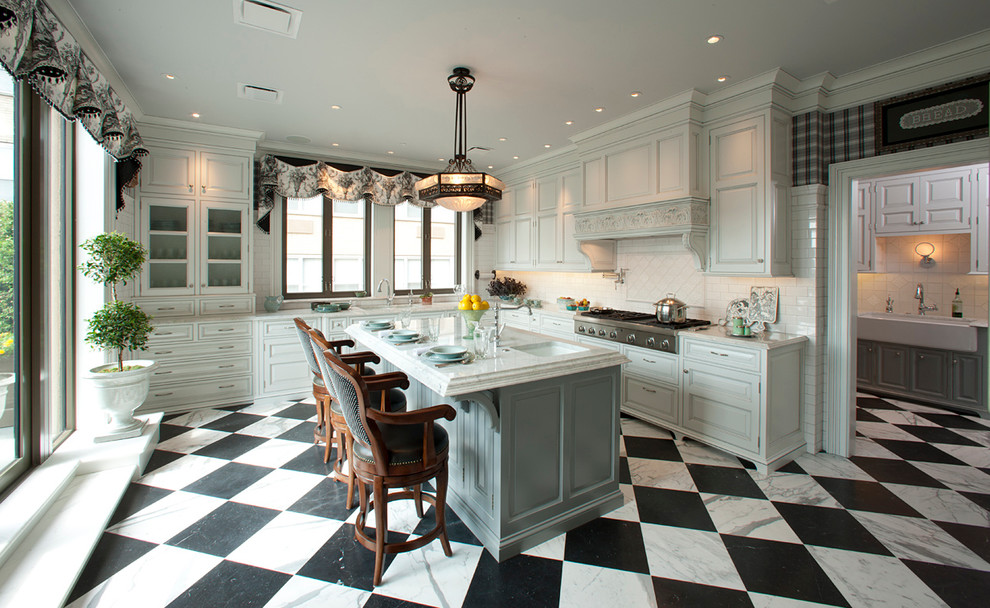
In an urban neighborhood of Philadelphia, this kitchen provides plenty of glamour and upscale finishes for the empty nest of these owners. Spaces and features are generous but not oversized.
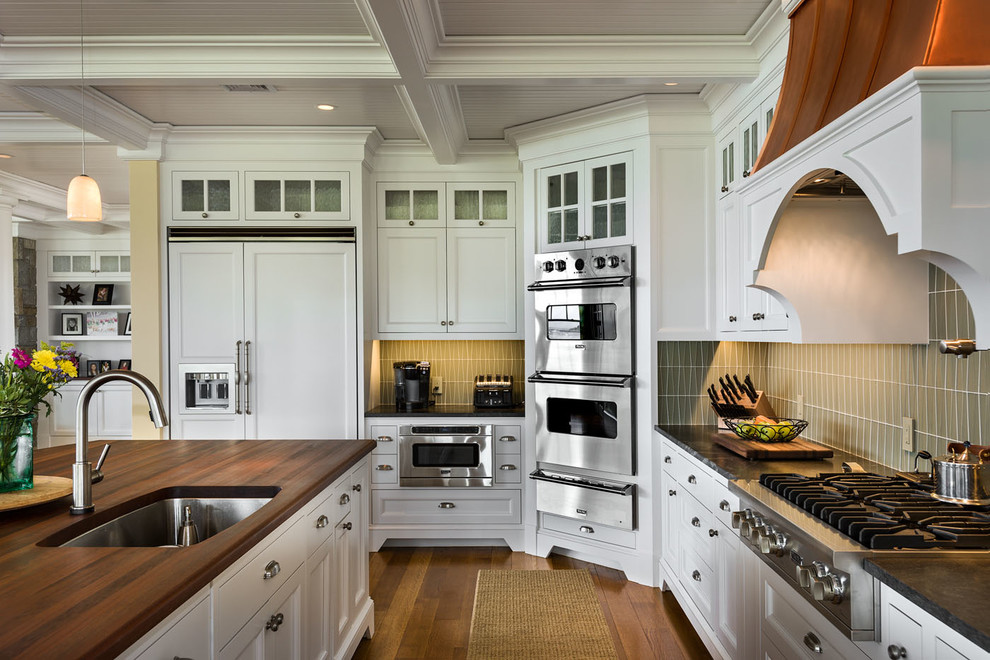
This kitchen begins with a large built-in refrigerator with an ice and water dispenser. A microwave and coffee maker come next before transitioning to the cooking center, which hosts a double oven and warming drawer, and a large professional-grade cooktop to the far right. The sink and dishwasher in the island complete the work triangle positioned comfortably between the cooking and refrigerator centers.
Organize storage space around your kitchen’s main activities for easier cooking and flow. (cited)


Consider grouping your kitchen storage around three primary activity areas: the refrigerator, the sink and the range.